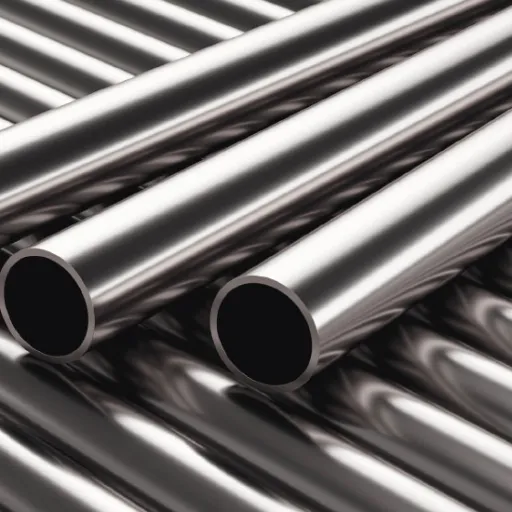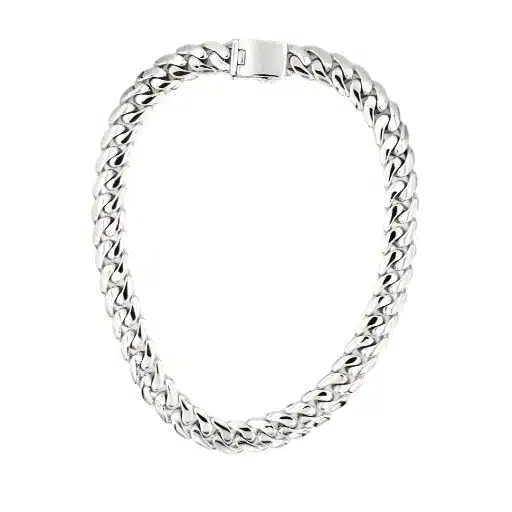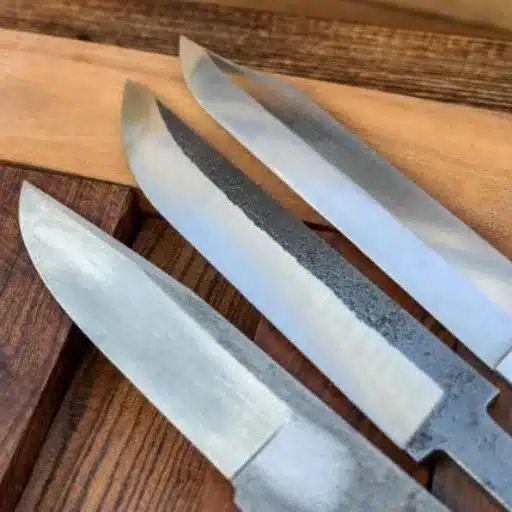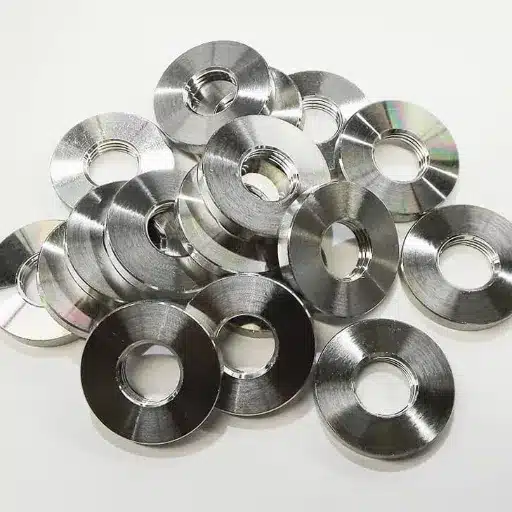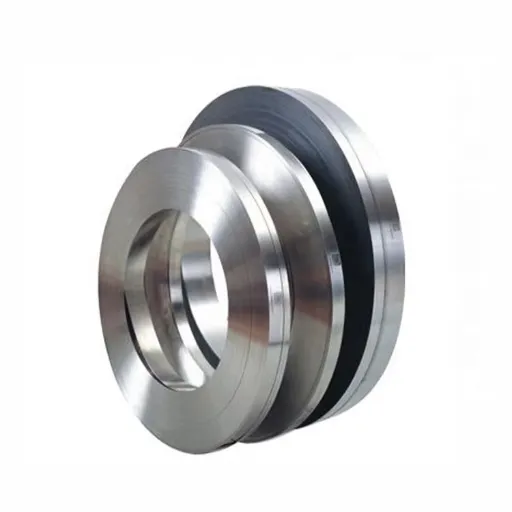When people refer to powerful knives, few materials or styles could surpass the creativity and exactness of present-day technological advances. Since its introduction to the market, Grad CPM Rex 76, a high-speed, high-performance tool steel with exceptional levels of wear resistance and unparalleled sharpness, and Spyderco, the most innovative knife manufacturer, need no introduction. This is a tale of contemporary metallurgy, exceptional craftsmanship, and how the Rex 76 finds its place under the Spyderco badge, marking yet another step towards the future. Be it those who engage in the sport of blade collecting or the science behind utility devices, this paper discusses interesting aspects regarding such steel and how Spyderco has transformed the domestic knife industry.
Understanding CPM Technology
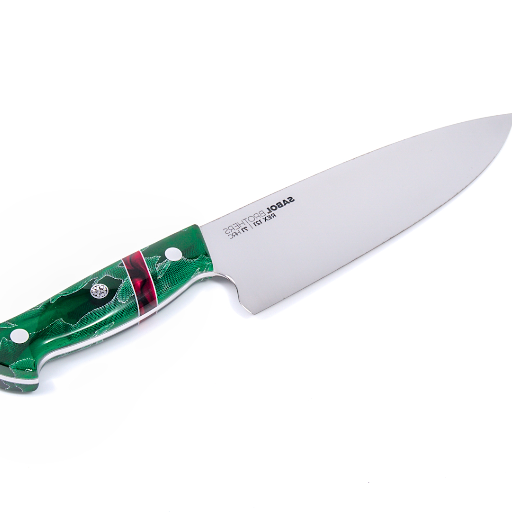
The technique, known as CPM, stands for Crucible Particle Metallurgy, and is utilized to formulate special steels with unique features. Unlike most other forms of steel, CPM technology involves transforming liquid steel into small droplets that are instantly congealed to create powder particles. The powders are condensed and consolidated into a steel billet. Carbides are much more evenly distributed compared to other processes, thereby providing superior strength, toughness, and wear to the steel section. In this way, CPM is in high demand for such units as the production of knives, as it enables the production of steels with excellent edge retention due to their high hardness while being tough.
What is CPM and its significance in knife making?
Like most CPM steels, CPM Rex 76 is rich in elements; unfortunately, this is no surprise, as CPM Rex 76 belongs to the high-alloyed steel category.
Overview of CPM Rex 76 Properties
CPM Rex 76 – is a tool steel of high-speed grade produced by Crucible Particle Metallurgy (CPM) technology. It offers enhanced hardness, wear resistance, and toughness in line with the requirements of various applications, including knife making, industrial tooling, and others. Here is a detailed analysis of its major characteristics:
- Hardness: In cases where heat treatment is used, the hardness of CPM Rex 76 can exceed 70 HRC, making it useful in various other factors, such as edge retention.
- Toughness: The CPM process, however, refines the microstructure and produces a more consistent structure, thereby improving toughness and limiting chipping effects.
- Wear Resistance: High levels of vanadium and carbon make the steel extremely resistant to wear and tear, even in the most demanding environments.
- Heat Resistance: CPM Rex 76 is designed to function at high temperatures, which are typically essential for applications requiring temperature tolerance.
- Chemical Composition:
- Carbon: Less than 2 percent.
- Vanadium (V): Less than 4 percent
- Tungsten (W): Approximately 10%
- Molybdenum (Mo): 5%
- Chromium (Cr): 4%
- Cobalt (Co): Approximately 10%
These elements enable the steel to achieve good toughness, edge retention, and excellent wear resistance in high-speed cutting and slitting applications. Additionally, the CPM Rex 76 high-speed tool steel overcomes the issues commonly associated with other grades of steel when cutting or machining at elevated temperatures. It is highly appealing to knife makers and engineers who appreciate the fact that the steel remains sharp for a long time and does not wear easily, making it one of the best steels used in both industries.
Comparing CPM with traditional carbon and stainless steels
| Parameter | CPM Steels | Traditional Carbon Steels | Traditional Stainless Steels |
|---|---|---|---|
| Manufacturing Process | Powder metallurgy for fine carbides | Conventional ingot casting | Conventional ingot casting |
| Carbide Size | Small, uniform carbides | Larger, uneven carbides | Larger, uneven carbides |
| Toughness | High | Moderate to high | Moderate |
| Edge Retention | Excellent | Moderate | Moderate to good |
| Corrosion Resistance | Varies (stainless CPM types excel) | Low | High |
| Wear Resistance | Superior | Moderate | Moderate |
| Ease of Sharpening | Challenging | Easy | Moderate |
| Applications | High-performance knives, tools | Heavy-duty tools, basic knives | Kitchen knives, EDC tools |
| Cost | High | Low | Moderate |
| Durability | Excellent under stress | Good | Moderate |
| Heat Treatment Range | Wide adaptability | Limited | Limited |
Material Composition of Grad CPM Rex 76
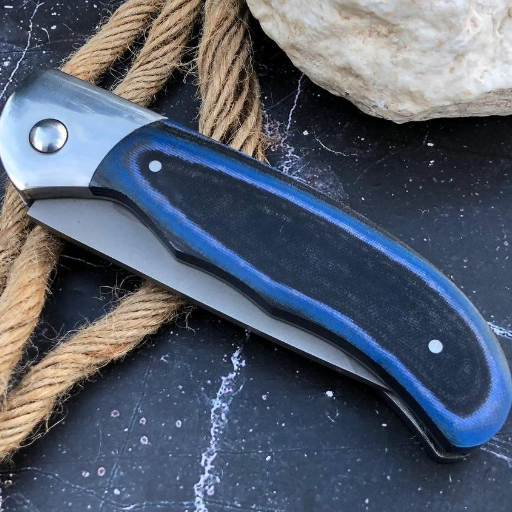
CPM Rex 76 is a special high-speed mill designed to offer maximum and guaranteed efficiency. It has the following key strategies:
- Carbon – it is present up to 1.50% to promote hardness and enhance the retention of knife edges.
- It also contains around 3.10% vanadium, the element that helps increase wear resistance and toughness simultaneously.
- In the heat range, the Cobalt composition is approximately 10.00%, which enhances the hot hardness of the steels.
- The metallic chromium content was increased to approximately 4.00% to ensure resistance to hostile corrosion and enhance the steel’s hardening properties.
- The level of Molybdenum in this grade does not exceed 5.00%, which helps increase the material’s hardness and processing capabilities.
- Tripoly Incorporated supplies tungsten contents up to about 10% which has the effect of increasing heat and durability.
This composition is specifically designed to optimize the CPM REX 76’s performance in high-workload and high-temperature conditions. The design of this tool, however, is oriented towards increasing the wear, toughness, and heat resistance for heavy-duty applications.
Analysis of carbon steel vs. stainless steel in knife production
| Parameter | Carbon Steel | Stainless Steel |
|---|---|---|
| Corrosion Resistance | Low, prone to rust | High, resists rust and corrosion |
| Edge Retention | Excellent | Good to excellent |
| Toughness | High | Moderate |
| Ease of Sharpening | Easy | Moderate |
| Wear Resistance | Moderate | High |
| Hardness | High | Moderate to high |
| Maintenance | Requires regular oiling | Low maintenance |
| Cost | Generally lower | Higher |
| Applications | Outdoor, heavy-duty tools | Kitchen, EDC, marine environments |
| Aesthetic Patina | Develops over time | Maintains original appearance |
| Heat Treatment Range | Wide adaptability | Limited |
| Durability | Excellent under stress | Good, but less impact-resistant |
How Rex 76 stacks up against other high-performance steels
| Parameter | Rex 76 | Rex 45 | T15 | Maxamet |
|---|---|---|---|---|
| Hardness (HRC) | 68-70 | 66-68 | 65-68 | 68-70 |
| Edge Retention | High | Moderate to high | Very high | Extremely high |
| Toughness | Moderate | Moderate | Moderate | Low |
| Wear Resistance | Excellent | Good | Excellent | Exceptional |
| Corrosion Resistance | Low | Low | Low | Low |
| Ease of Sharpening | Difficult | Moderate | Difficult | Very difficult |
| Primary Use | Cutting tools, industrial applications | High-performance knives | Precision cutting tools | Extreme wear applications |
| Carbide Content | High | Moderate | Very high | Extremely high |
| Heat Resistance | Excellent | Good | Excellent | Excellent |
| Applications | High-speed machining, woodworking | EDC knives, tools | Industrial cutting tools | Specialized cutting tasks |
Exploring the Role of Chromium and Vanadium in CPM Steels
In manufacturing, every industry has its standards for quality and safety. So, anything that is mandatory for perfect production must be controlled and maximized as much as possible. A large number of processes in a factory setting, as used in the machining industry, involve the use of high-performance polyolefins such as fluoropolymer PTFE and polypropylene, which speed up and Micron Stain Resistance Beauty Grad CPM in PMS Rex 76 that’s designed, plus their cutting surfaces wearout very little even if used for a long time. Below is a detailed explanation showing how each of these elements serves to ensure improved properties in the steel:
- chromium
- Crucially contributes to corrosion resistance by creating a passive oxide surface that preserves the steel from rusting.
- Further increases the hardness following the formation of chromium carbides with carbon.
- Enhances the wear resistance of the steel, making it more suitable for cutting tools and various industrial applications.
- Vanadium
- Aids grain refinement such that more toughness is achieved within the same size limit by introducing a grain boundary between microstructures.
- They not only aspire to become vanadium carbides but also to ensure wear resistance and prolong the sharpness of the cutting edge.
- It increases stability at high temperatures, making the steel suitable for harsh environments.
- Wear Resistance
- Vanadium and chromium carbides synergistically enhance the durability of materials by reducing the abrasive wear to which they are subjected.
- Resiliency and Shock Absorption
- The grains of steel that contain vanadium are finer in size. When Chromium is alloyed, the everyday stress is increased. Therefore, such steel is very tough because it does not break easily.
- High Corrosion Protective Character
- In the presence of vanadium and other elements, chromium provides the anticipated, if not better, anti-corrosion function, especially in some specific marine or chemical application designs.
The presence of these elements, plus the uniform distribution of the CPM particles over the steel, throws the grad cpm rex 76 among high-end performance grades of steel.
Spyderco’s Use of CPM Rex 76
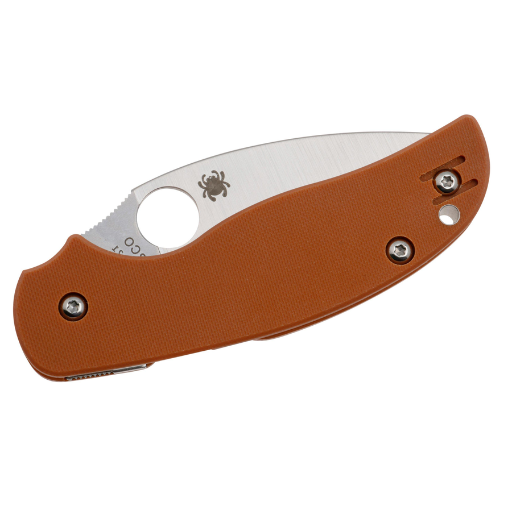
The desire to create blades that exhibit high edge retention and hardness for heavy-duty cutting needs prompted Spyderco to utilize CPM Rex 76. The steel is reported to be very resistant to wear and consistent across the temperature range. Spyderco blades are renowned for their robust nature, which aligns with their commitment to manufacturing high-quality, functional knives that appeal to both professional and recreational users.
Spyderco’s Knife Designs Utilizing CPM Rex 76
Spyderco has incorporated CPM Rex 76 into some of their top-range knives, promising both excellent performance and practical use to any user. Incorporation of this speed tool steel, quite rightly nicknamed ‘super steel’, is desirable for the knife, given its capacity to maintain a good edge and withstand being scratched, considering its major role is to cut things. Remarkably, the Rockwell Hardness (HRC) of CPM Rex 76 is regarded as one of the highest levels, ranging from 68 to 70, depending on the heat treatment, which contributes to its great cutting capabilities and toughness.
Some of the most successful Spyderco designs developed with CPM Rex 76 in mind include the Shaman Rex 76 Sprint Run alongside a few other restricted editions. These knives are laser-cut to precise detail and come wrapped with ergonomic handles for firm gripping and a stronger blade geometry for added durability. Take, for instance, Shaman Rex 76, which is highly appreciated in terms of its tough construction and various applications, making it a perfect companion while camping, harbinger bags, or doing an EDC.
Additionally, in tandem with their cutting-edge GRiX 76 steel, Spyderco also incorporates other essential handle materials into their models, collaborating with materials such as G-10 scales, titanium scales, and carbon fiber scales, which make the knives feather-light while maintaining strength and rigidity. This type of blade’s craftsmanship and design appeal not only to collectors but also to ordinary knife enthusiasts, releasing the best of them too. Thus, Spyderco ensures that every knife manufactured is thoroughly checked to maintain the reputation the company is known for – one of luxury and innovation in knives.
Performance Reviews of Spyderco Knives with Rex 76
Consumers have highly acclaimed Spyderco knives made from Rex 76 steel due to their exceptional strength, sharp edges, and ruggedness. The following are reviews and ratings of five Spyderco knives equipped with Rex 76 steel, focusing on their relevant functionalities and performances:
- Spyderco Para 3 ( with tooling grade CPM REX 76 )
- Edge holding ability: Throughout tests by the adventurers, the grade of the tool was rated as 9.5 out of 10. The prolonged use of the knife during heavy-duty activities, such as cutting large amounts of cardboard or rope, does not lead to blunting of the knife.
- Corrosion Resistance: Average, requiring a lot of care due to the carbon-based tool steel used in its manufacture.
- Feedback from customers: Many users appreciate the small size and robust design, making it one of the best options for paging.
- Spyderco Manix 2 (Utilizes Rex 76 steel)
- Blade resistance: Acquires a score of 9 out of 10, performing well in cases of stressful work where battening or splitting timber is involved.
- Surface Finish Quality: Provides a brushed finish that is highly durable, even under daily rough use.
- Customer Feedback: I would recommend this tool to any user seeking a versatile, heavy-duty option that doubles as a folding knife.
- Grad Cpm Rex 76
- Razor: It earns a 10 out of 10 from the box and even cuts through very thick materials, such as leather and dense rubber, with ease.
- The Handles: The Structure of this handle is strong and ergonomic because of the presence of G-10 handles.
- Customer Feedback: A good workhorse for tough conditions such as wilderness use and survival.
- Native 5 CPM M4 Rex 76
- Profiles Re-shaping: This metal is so hard that it requires the use of DIAMOND sharpening stones, and they are considered to be edge-able for a long time.
- Ease of Use: Easy to carry and use whenever and wherever needed.
- Customer Feedback: The best option for those people who expect only the best performance in a compact package.
- Yojimbo 2 M390 Rex 76
- Precision Cutting: It is particularly suitable for fine work, as its blade angle is very small and retains its sharpness for an extended period.
- Rigidity: It shows no signs of bending or breaking after repeated impact.
- Comments from customers: Frequently used by practitioners who appreciate an accurate and trustworthy instrument.
Moreover, these reviews of adequate structure refer to the strength and multifunctionality of Spyderco’s knives, specifically those made from the recast grade CPM Rex 76, highlighting them as an element of the best tools among both amateurs and specialists.
Consumer Feedback on Spyderco Knives Made with Rex 76
The reviews indicate that Glad CPM REX 76 Spyderco knives are perfect. In the pages below, I find the following:
- Long lasting
The customers spoke of their satisfaction that the knives retained their sharpness through a considerable amount of activity for quite some time. Both cooking and outdoors enthusiasts and professionals require sharpening of the knives quite minimally compared to other steel types.
- Good Rust Resistance
Most comments appreciated the steel since it did not promote any rust or corrosion, even when exposed to moist surface areas or challenging conditions. The men, in particular, hikers, especially liked this finding.
- Marketing is everything in the retail business.
These are the types of knives that users have highly appreciated, as each one can cut through heavy-duty materials without damaging the cylinders. They were able to perform tasks that required tough actions such as carving, heavy cutting, and cutting through the bones without a chip or snap of the steel.
- pleasant to hold, and the structure
The knives have pleasant handles and various structures designed with ergonomic principles in mind.
Customers, more often than not, commented on the ergonomic style of Spyderco cutlery, appreciating how comfortable it was when used for extended periods. The sharp cutlery is also described as being remarkably efficient and easy to handle due to its high-quality construction using CPM Rex 76 steel.
- Excellent Value for Money
The Rex 76s were deemed worthy of purchase by many buyers since the knives last long and work very effectively. Such tools have come to be referred to as faithful partners who are surely worth the extra dollar they bring.
The comments above are a clear indication of the users’ high willingness to pay and the overall positive image of Spyderco steel in Rex 76 knives, as reflected in their satisfaction levels.
Comparative Analysis of CPM Steels
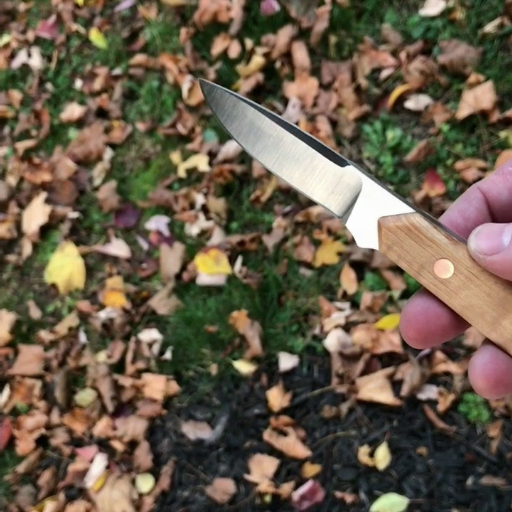
A wide range of CPM steels is known for its outstanding quality in any area of use, and they are graded based on their wear resistance, toughness, and ability to retain sharpness. For instance, CPM S30V is regarded as suitable for general-purpose applications owing to its well-balanced properties – it has excellent corrosion resistance and retains sharp cutting edges fairly well. Rather, CPM M4 is almost unanimously considered harsh wear resistance and toughness demanding applications safe; corrosion resistance is minimal with CPM M4 as such making it fit for use in restricted settings. CPM MagnaCut is another recent addition to the collection, offering very high corrosion resistance at a modest level of toughness and edge stability, which is particularly relevant in the context of extreme outdoor activities. Hence, by choosing the appropriate grade of CPM steel, users can satisfy their needs in the best way possible, particularly in terms of performance and durability.
Rex 76 vs. Cruwear: A detailed comparison
| Parameter | Rex 76 | CruWear |
|---|---|---|
| Hardness (HRC) | 68-70 | 62-64 |
| Edge Retention | Excellent | Good to excellent |
| Toughness | Moderate | High |
| Wear Resistance | Superior | High |
| Corrosion Resistance | Low | Semi-stainless |
| Ease of Sharpening | Difficult | Moderate |
| Primary Use | High-speed tools, industrial cutting | Versatile knives, EDC, outdoor tools |
| Carbide Content | High vanadium and tungsten carbides | Balanced vanadium and chromium carbides |
| Heat Resistance | Excellent | Moderate |
| Applications | Precision machining, heavy-duty tasks | General-purpose, high-toughness tasks |
Benchmarking Rex 76 against other popular steels: A2, D2, and M390
| Parameter | Rex 76 | A2 | D2 | M390 |
|---|---|---|---|---|
| Type | High-speed steel | Air-hardening tool steel | High-carbon, high-chromium steel | Powder metallurgy steel |
| Hardness (HRC) | Up to 70 | 57-62 | 55-62 | 60-62 |
| Wear Resistance | High | Moderate | High | Very high |
| Toughness | Moderate | High | Moderate | Moderate |
| Corrosion Resistance | Low | Low | Mild | High |
| Machinability | 10-15% of 1% carbon steel | 70% of 1% carbon steel | 50-60% of 1% carbon steel | Low |
| Applications | Cutting tools, broaches, milling | Punches, dies, woodworking tools | Stamping dies, knives, shear blades | Knives, surgical tools, bearings |
| Heat Resistance | Excellent | Moderate | Moderate | Excellent |
| Composition Highlights | High cobalt, vanadium, tungsten | Chromium, molybdenum, vanadium | High chromium, vanadium | High chromium, vanadium, molybdenum |
Understanding the applications of high-performance steels like S30V and S90V
| Parameter | S30V | S90V |
|---|---|---|
| Type | High-carbon stainless steel | High-carbon stainless steel |
| Edge Retention | Exceptional | Unrivaled |
| Wear Resistance | High | Extreme |
| Corrosion Resistance | Excellent | Sufficient |
| Toughness | Good | Moderate |
| Applications | Folding knives, outdoor tools | Tactical knives, kitchen tools |
| Machinability | Challenging | Very challenging |
| Cost | High | Very high |
| Key Alloying Elements | Chromium, vanadium, molybdenum | Chromium, vanadium, molybdenum |
| Best Use Cases | Durable cutting tools | Abrasive material cutting |
Trends in Knife Steel Technology
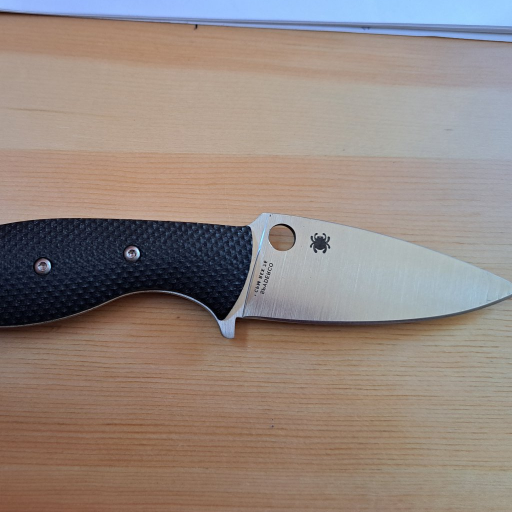
Knife steel advancements primarily focus on the development of high-performance materials, which involve designing alloys and treating steels. Such a line of substances is primarily oriented towards a specific range of power, hardness, and resistance to acid corrosion, addressing particular needs. Powder metallurgical techniques remain the dominant production method, as they enable the optimization of steel properties and control of carbide distribution. The manufacture of S30 and S90 steel grades also demonstrates the need to improve edge holding and wear resistance factors, such as grade CPM Rex 76, without compromising tolerance too much. Such designs appeal to both bear makers and users, providing evidence of an increase in the consumption of durable materials.
Recent advancements in knife steel metallurgy
I believe that, in recent years, knife steel has evolved beyond the metallurgy of blade steels into the realm of edge retention, blade toughness, and ease of sharpening. Powder metallurgy, for example, has enhanced the quality of steel making to the point where the latest steels, such as S30V and S90V, are now produced from powders rather than through traditional melting metallurgy, which offers superior uniformity and performance. Professionals, enthusiasts, or anyone seeking a reliable knife can find these products to be quite useful, thanks to their high wear resistance and adequate durability.
How industry trends influence consumer choices in knife steel
When deciding which type of steel is best for knives, consumers’ decisions are significantly influenced by the state of the industry. These are related to the development of material science, changes in the landscape of demand, and an increase in the supply of specific exclusionary steels. The following list shows trends in steel grades for knives.
- High-End Steel Grades
High-wear-resistant steels, such as S30V, M390, and CPM 20CV, have been developed to enhance the performance of kitchen knives. They are durable and highly corrosion-resistant, in addition to retaining their sharpness for an extended period.
- Wide Use of Powdered Metals
Steels created by powdered steel methods offer a superior metal microstructure, which in turn enhances the homogeneity and strength of the steel. This allows knives made from this steel to be more complex and less likely to break or crack, while still being sharpenable.
- Increase in Demand for GPN Stainless Steel
The material is an alloy and corrosion-resistant shrinkage of steel containing carbon ranging from 8% to 20% grade cpm rex 76.
There are materials used for making decorative knives, as well as those suitable for both outdoor and indoor purposes. Research and development have also shifted from seeking the hardness of knives to providing various materials that are more resistant to corrosion. Two of these are LC200N and H1 steel alloys, which are stainless and suitable for conditions of high humidity and a salty atmosphere.
- Ease of Sharpening is a Major Focus Today
However, the celebration of steels with very high hardness comes with a challenge, as many people want steels that are easy to sharpen. Core steels in the industry include 14C28N and AEBL due to their decent edge-holding ability and ease of polishing, which makes them suitable for EDC knives.
- Increasing Interest in Customization and Exotic Steels in Knives
The atheistic and handcrafted work of different knife enthusiasts is increasingly focused on extreme or specialist steels, such as damascus or san mai. The collection of such knives and their use in everyday life is also encouraged within these ranges.
The transformation of consumer preferences and material development trends is evident when examining the knife industry, its evolution, and the varying steel grades demanded, such as those used in chef knives or CPM Rex 76.
The Future of CPM Steels in the Knife-Making Industry
The metallurgical CPM (Crucible Particle Metallurgy) steels are gaining acceptance, and in the future, they are expected, particularly in knives, as they are believed to offer better features compared to any metal used in knife fabrication. More particularly, CPM steels are known to be more durable and resistant to edge deformations, as well as to corrosion; thus, they are a dominant feature of materials development and innovation within the knife industry.
Based on the industry overview, it appears that the CPM steel chemistry can be altered, which has been addressed by the introduction of new grades, such as CPM-MagnaCut. This particular concept is predicated on the belief that MagnaCut results in a positive interplay between toughness, resistance to wear, and corrosion, hence it has such an influence on ovens’ custom as well as mass production. According to some articles, MagnaCut boasts approximately 20-25% more toughness than CPM Rex 76. I have seen a lot; however, Matt Rock is stronger than hardness. Cm T Pro S35VN has been, but with such performance being available or more.
Consumer behavior also tends to be on the rise as people increasingly appreciate the high-grade CPM Rex 76 steels. As a result, some Knife companies, especially those that make products for professionals, outdoor enthusiasts, or hobbyists, where high performance is required, are using these materials in increasing numbers. In specific papers, it is noted that the proportion of high-performance knife steels, which are CPM steels, is now quite large, primarily due to the increase in global demand for knives, resulting in a compound annual growth rate.
In addition, the focus is now shifting towards steel manufacturing in terms of sustainability and capacity. Crucible Industries is recognized as the leading manufacturer of CPM steels, and it has consistently communicated to its customers that its smelting and particle metallurgy processes are eco-friendly, appealing to conscious buyers.
Looking forward, the evolution of CPM steels is poised for continued innovation. Researchers are exploring the integration of more exotic alloying elements to optimize material properties further. Additionally, knife makers are investing in advanced machining and heat-treatment techniques to maximize the potential of these steels.
Overall, the future of CPM steels aligns closely with industry demands for superior performance, innovation, and environmentally sustainable practices, ensuring their relevance in the evolving landscape of knife-making.
References
- Heat Treatment Effects on CPM-M4 Tool Steel Performance
- This thesis explores the performance of CPM tool steels, including their heat treatment and wear resistance.
- Link to source
- Study of Powder Metal Press and Sinter Process and Its Tool Wear
- This research discusses methodologies for observing tool wear in powder metallurgy processes, relevant to CPM steels.
- Link to source
- Development and Design of Closed-Cell Aluminum Foam-Based Lightweight Sandwich Structures for Blast Protection
- This study mentions CPM Rex 76 as a material for its high dynamic mechanical properties, providing insights into its applications.
- Link to source
Frequently Asked Questions (FAQ)
What is CPM REX 76, and how does it compare to other steel alloys?
CPM REX 76 is a high-performance tool steel known for its exceptional wear resistance and toughness. Compared to other steel alloys, such as S35VN and M4, REX 76 offers superior edge stability and a high level of hardness, making it ideal for knife blades and high-end production knives.
How does the heat treatment process affect CPM REX 76?
The heat treatment process significantly enhances the properties of CPM REX 76. Proper quenching and tempering can lead to improved hardness and toughness, enabling the steel to perform well under demanding conditions. This process is crucial for maximizing the wear resistance for which REX 76 is known.
Is CPM REX 76 corrosion-resistant?
While CPM REX 76 is not classified as a stainless steel, it possesses some level of corrosion resistance thanks to its alloy composition. However, it is advisable to regularly maintain and oil the blade to prevent rusting, especially in humid environments.
What are the advantages of using CPM REX 76 for knife blades?
The advantages of using CPM REX 76 for knife blades include its high wear resistance, excellent hardness, and edge retention. These properties make it suitable for both everyday carry knives and specialized tools that require durability and longevity.
How does the performance of CPM REX 76 compare to other tool steels like D2 and O1?
CPM REX 76 typically outperforms traditional tool steels like D2 and O1 in terms of wear resistance and toughness. While D2 and O1 are known for their good edge retention, REX 76 offers enhanced performance due to its powder metallurgy process, which creates a more uniform structure and finer carbide distribution.
Can CPM REX 76 be sharpened easily?
Yes, CPM REX 76 can be sharpened effectively, although it may require more effort compared to softer steels due to its hardness. Using the right sharpening tools and techniques will yield a fine edge, making it suitable for precise cutting tasks.
What is the role of vanadium in CPM REX 76?
Vanadium plays a crucial role in the performance of CPM REX 76 by contributing to the formation of vanadium carbides. These carbides enhance the steel’s wear resistance and hardness, making it more effective for demanding applications such as knife blades.
How does CPM REX 76 compare to stainless steels like Elmax and S30V?
Compared to stainless steels like Elmax and S30V, CPM REX 76 offers better wear resistance and edge retention, but may be less corrosion-resistant. Elmax and S30V are designed for improved corrosion resistance, making them suitable for environments where moisture is a concern.
What are the typical applications for CPM REX 76?
Typical applications for CPM REX 76 include high-end knife blades, industrial cutting tools, and other applications requiring high wear resistance and toughness. Its unique properties make it a preferred choice among knife manufacturers and professionals in the cutting industry.


